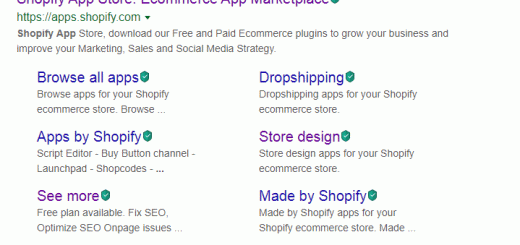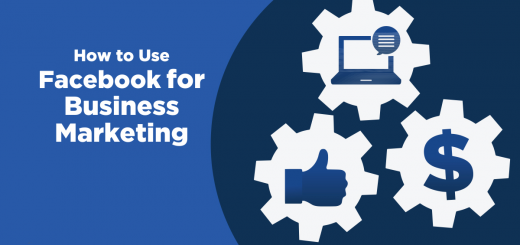How to use Facebook Ads to grow your email list in 10 steps
Email marketing is one of the most effective types of digital marketing. What you need is an email list you built — one that’s made up of people who chose to opt in because they care about what you have to say. Email subscribers that chose you are extremely valuable, but hard to find. To build and grow a strong email list, you need a strategy for promoting it.
There are a lot of smart techniques you can use to get more email subscribers. A good option that many overlook is using Facebook ads.
Here are a few tips to help you know how to use Facebook Ads to grow your email list.
1. Develop an email marketing plan
Before you get to the point of using Facebook advertising to grow your list, you need to figure out what you’re going to do with your email list. There’s no point in working to gain subscribers if you’re not ready to follow that up with work to keep them.
Create a plan for the types of emails you’ll send out and the schedule you’ll send them out on. You may want to create an email newsletter that goes out every month, or plan on sending a weekly update that includes links to the new content on your site.
You can send out more directly promotional emails as well, but don’t make that all you ever do. Promotional emails work best if the recipient is already familiar with your brand and has a reason to trust you. Your other emails will help build that trust.
2. Select “Lead Generation” as your campaign objective
One of the first steps to creating an ad in Facebook is choosing your campaign objective. After you click the Create button, you’ll see a few options you can choose from in a dropdown menu. Since your primary goal is building an email list, select “Lead Generation”.

This ensures that the options Facebook provides as you go through the steps of creating your ads will match up with your goal of collecting email addresses from people in your target audience.
3. Clarify your target audience
One of the next steps is to set up your audience targeting. Facebook allows advertisers to narrow down who will see your ads based on wide variety of factors, including:
- Geographic location
- Age range
- Gender
- The language(s) they speak
- Education level
- Relationship status
- The type of work they do
- Their financial status
- Whether they have kids or not
- Their political preferences
- Their interests
- Their online behaviors
- Whether they’ve interacted with you before
Think about what your ideal customer looks like. Use this step to clarify who you want to reach with your ads so you get the most bang for your buck.
4. Choose what information to collect
You definitely want to collect email addresses — that’s the main goal here, after all. But Facebook will let you choose additional information to ask for in your ads, such as:
- First name
- Last name
- City
- Phone number
- Date of birth
- Job title
- Company name
On the one hand, the more information you ask for, the better you’ll be able to provide relevant emails to your new subscribers. On the other hand, adding more required fields for people to fill in before signing up may lose you some leads who decide it’s too much work.
Most businesses should be fine sticking with name and email address, only add the others if they’ll help you create more useful, segmented lists.
5. Set your budget
Figure out what you can afford. You can set a maximum daily budget, and select whether to bid manually on your ads or let Facebook do automatic bidding for you. Automatic bidding is generally the best choice for anyone that’s not already an expert in PPC advertising.

Keep in mind that the more you’re able to spend, the more people will see and interact with your ads. Try not to be too stingy here, while staying within a budget you can handle.
6. Create eye-catching images for your ads
Now it’s time to create the ads themselves. Social media is a visual medium, so make sure you include an image (or several) in your ad that will attract your audience’s attention, while still being relevant to what you’re offering.
7. Write copy that emphasizes the benefits of subscribing
An image can’t tell the whole story, so couple it with words that tell your audience what they’ll get out of subscribing to your email list.
Make sure you focus on the benefits to them. It may be accurate that signing up means learning more about your brand and products, but that won’t convince most people. What problems will your emails help them solve? How will you make their lives easier or better?
8. Include a clear call to action (CTA)
You want them to take an action, so tell them what to do. You can test out different language to use here, but be sure you explicitly ask people to “Sign up today” or “Subscribe now”.
Facebook will provide some options for you to choose from here.

9. Set up a relevant email drip campaign for new subscribers
Every time someone subscribes, it’s a win! But it could quickly turn into a loss if you don’t manage to keep them. One of the best ways to convince new subscribers that you’re worth sticking with is to set up a series of welcome emails that automatically go out to new subscribers.
Use these initial emails to explain to your subscribers what they can expect from your email list, make the case for why it’s worth sticking around, and provide them a reward of some sort for joining (such as a discount offer or exclusive content).
Providing value right away while the decision to sign up is still fresh in their memory will give you the chance to establish the relationship and show them you’re worth their time.
10. Test and tweak
You won’t know what will get results until you get started. Pay attention to your analytics — both for Facebook and your emails — to learn what’s working. Test out different images, copy, and CTAs to see what your audience responds to best.
Over time, you’ll learn more about your target audience — what they respond to and what they care about. That knowledge will enable you to run better ads, strengthen your email marketing campaigns, and provide better service to your customers.
Source: Hostgator’s Blog








